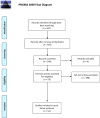Minimally Invasive Treatment in Benign Prostatic Hyperplasia (BPH)
- PMID: 36794408
- PMCID: PMC9936536
- DOI: 10.1177/15330338231155000
Minimally Invasive Treatment in Benign Prostatic Hyperplasia (BPH)
Abstract
Review efficacy and safety of minimally-invasive treatments for Low Urinary Tract Symptoms (LUTS) in patients affected by Benign Prostate Hyperplasia (BPH). We performed a systematic review of the literature from 1993 to 2022 leveraging original research articles, reviews, and case-studies published in peer-reviewed journals and stored in public repositories. Prostate artery embolization (PAE), transurethral needle ablation (TUNA), transurethral microwave thermotherapy (TUMT), high intensity focused ultrasound (HIFU), laser treatments and Cryoablation are valid and safe alternatives to the gold standard (surgery) in the treatment of LUTS in patients affected by BPH, with fewer undesired effects being reported.
Keywords: benign prostatic hyperplasia; interventional radiology; low urinary tract symptom; minimal invasive treatments; prostate.
Conflict of interest statement
The author(s) declared no potential conflicts of interest with respect to the research, authorship, and/or publication of this article.


